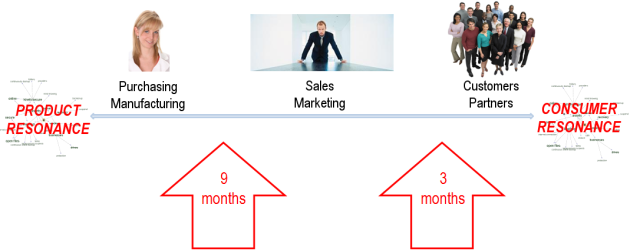Advertisers, Lawyers, Venture Capitalists and the future of Social Media
2011/02/19 Leave a comment
Just as advertisers and lawyers finally learn to adapt to Social Media, the brightest Venture Capitalist in Silicon Valley, the same minds who gave birth to Yahoo, Google, Facebook and Twitter, are feverishly crafting a more fearsome spawn — Groups.
Advertisers, Lawyers & Content
In the Great Wave Off Kanagawa
1. Advertisers Spend Client Money to Push Huge Content Waves
In the heyday of old Media advertisers spent a lot of client money attempting to deliver customers to their clients and while they may have understood that half of their budgets were being wasted they didn’t know how to measure which half.
2. Lawyers Spend Client Money to Sort through Huge Content Waves
Despite the fact that very few documents are useful or admissable, lawyers are compelled to launch high cost and generally low ROI eDiscovery projects by their need to minimize Risk for their firm and their clients.
Groups will add considerable Risk to Advertisers and Lawyers.
Can technology save advertisers and lawyers?
WATSON
Watson, recently highlighted in Jeopardy, is IBM’s latest and fastest computer and amazing when it comes to ‘reasoning’ and the mining of concepts and text. Watson may rule content and Jeopardy but is ineffective if members of trusted groups deny access to Watson because it is not in the ‘circle of trust’.
Groups Disrupt Advertising & Legal Models
If you haven’t already guessed ‘Groups’ is actually a class of software tools that facilitates the create of digital spaces where groups of people interact, get work done and then disband.
The impact of Groups on content creation, measures and trust is what advertisers and lawyers should fear.
Groups of ‘trusted’ members make it extremely difficult for advertisers to to deliver any content unless it is pulled in by a trusted group member. Regardless of the type of work done by the group, it is simultaneously a consumer, broker and creator of content and measures and effectively disrupts advertising business models.
eDiscovery in small trusted groups will be virtually impossible unless a group member surrenders all of the group content to lawyers which itself may be contradictory private non-disclosure contracts now used by lawyers to negotiate settlements or to privacy laws.
An interesting legal conundrum.
To understand the future of Groups we must start in Silicon Valley.
Silicon Valley Re-Engineers Evolution
In Silicon Valley venture capitalists influence corporate profits by shaping manufacturing and content creation standard to ensure the products they take to market are successfully propelled forward by a ‘matrix’ corporations much like a swarming brood that decends upon unsuspecting markets like billions of locust.
For those that may not know why Silicon Valley matters…
Quick History of Silicon Valley
Fields and groves of trees were soon overwhelmed by factories serving military and commercial manufacturers and the birthplace of venture capital innovation that powered; HP, Intel, Cisco, Microsoft, Apple, Yahoo, the Internet browser, Google, LinkedIn, Facebook and Twitter, and other well known corporations.
Silicon Valley is the heart of the Internet.
Quick History of the Internet
During the cold war the US military feared Russian missles and connected military and university computers to assess target risk. Complex calculations of potential missle flight paths were shared by many computers to speed up response analysis.
Shortly afterwards linked computers began to share email, exchange files and porn–the blueprint for the modern internet was born.
Venture Capitalists, Groups, Content and Trust
The internet perceived by most people when they view a browser is actually the world wide web or www and a small proportion of the ‘real internet’. Shortly after Netscape create the first visual brower Yahoo created the first highly successful commercial portal which was essentially a combination of a digital Yellow Pages and a business card listing.
Advertisers quickly determined that advertising budgets were better spent on Yahoo and a few years later Google helped get more advertisers to the internet by convincing more people to create content that would provide them ‘free’ advertising–the SEO model was born a few years later.

Evolution of Revolution
Yahoo was about people wayfinding in a huge directory and Google was about search optimization across millions of web sites though this caused stress to Venture Capitalists who needed more opportunities to provide Wall Street with opportunities for selling stocks of IPO’s or new companies going to the stock market.
Venture Capitalists saw that Google carved an private island inside the world wide web where corporations could advertise to people. VC’s then determined that offering people tools to advertise to each other would be event more profitable and soon formed the ‘social media’ islands where people joyfully spammed friends that were turned off by increasing amounts of spam delivered by search engine spiders and the advertisers that fed them. People were friendlier.
Group Tools that Rule
Twitter and Posterous are two of the three Group tools that I believe will lead the way to creating new opportunities and problems for advertisers and lawyers.
How do I know this?
Twitter allows members to follow or block other members en masse or create ‘private’ groups by combining features like lists, direct messages and # tags.
Posterous has recently announced a Groups focus which is extremely interesting as our success with Posterous is significant since we received 1,000 predictive analytics content ‘hits’ in 1 week for highly focused content by using the same Twitter-like Resonance technology used to synchronize 1,000 bloggers via simple Marketing Service Level agreements.
What is the third group tool that rules? Asana, at least for now.
Explore & Exploit Opportunities in Groups
Our experience includes the facilitation self-forming groups to deliver accelerated learning while simultaneously crafting trusted content focused Content and Web Strategies as well as Scenario, Business and Predictive Analytics.
Advertisers or Lawyers would benefit from our ability to align people, content, products or purpose, especially our combined use of Twitter, Posterous and other Social Media platforms combined with our accelerated group content facilitation.
Cheers,
Nick Trendov








